Nantucket Still Has Small-town Charm — but These Sophisticated New Hotels Make It a Global Destination
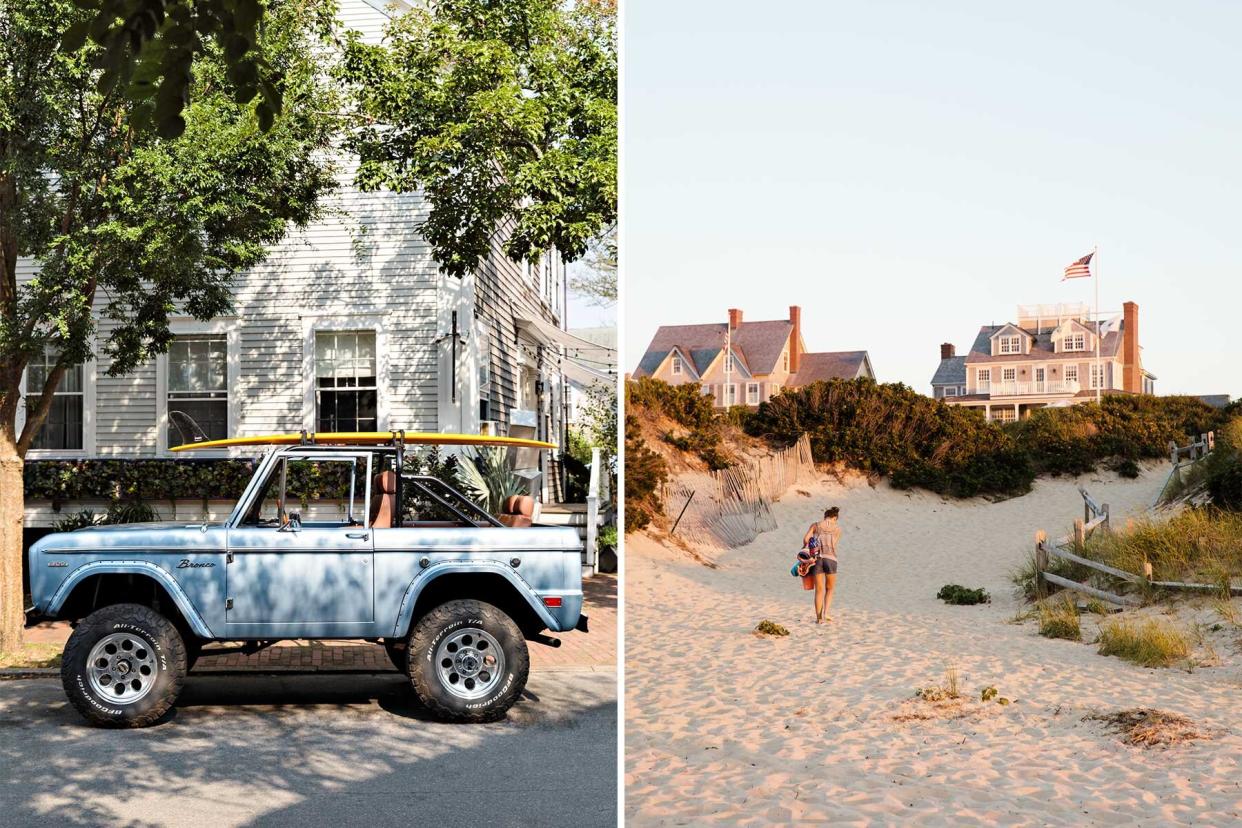
Elizabeth Cecil From left: Ready for a day of surfing in downtown Nantucket; Steps Beach, in the town of Nantucket.
The evening had started innocently enough. My wife, my two teenaged sons, and I had gone to dinner on the terrace of the Sister Ship restaurant, at the Faraway hotel in the town of Nantucket. It was August, we'd had a long day of sightseeing, and we were in need of some relaxed family time. But as the night wore on, the energy and buzz started to grow, with tanned, well-dressed, shiny people lounging in cane chairs and on yellow upholstered sofas.
The couple next to us were from Los Angeles. They'd had a few drinks and struck up a conversation, describing themselves as being "in the movie industry." One of them, I would later find out, was the former head of a major studio. At the table in front of us was a younger couple; as they leaned over to chat, we learned that they were fashion entrepreneurs who owned stores across the country. One of them was the daughter of a well-known senator.
A few more people joined our group; soon, as the wine flowed and the music grew louder, we found ourselves part of an impromptu global gathering, consisting mostly of urbanites trading stories about their far-flung vacations. The whole scene was bathed in an easygoing, prosperous cosmopolitanism that could have been transposed from Manhattan, London, or Tokyo. "I feel like we're in the middle of a party," I said at one point to my wife, who nodded her head in agreement. The kids, disgruntled, buried theirs deeper into their iPhones.
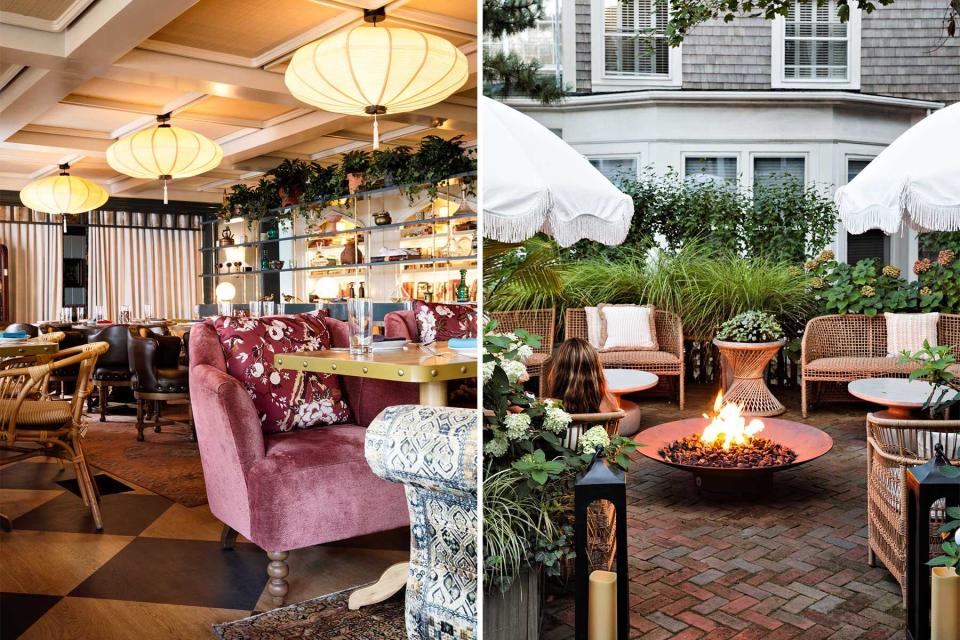
Elizabeth Cecil From left: The dining room of Sister Ship, the restaurant at the hotel Faraway Nantucket; the courtyard of the Life House hotel.
This was not, to put it mildly, the type of environment I'd been expecting when, a few days earlier, we boarded a ferry in Hyannis Port, 30 miles across Nantucket Sound on the Massachusetts coast. I had been reading "Moby Dick" in preparation for our trip, noting Melville's descriptions of Nantucket as "all beach, without a background"; of "the innocence of the land" and its "hermit" residents. Of course, I knew that the island had moved on since then; its position as the capital of America's whaling industry, which lasted from the mid 1700s to around 1830, had given way, by the second half of the 20th century, to a new status as a playground for the wealthy. Still, I was expecting a bucolic vacation, a retreat from the distractions of the modern world.
Related: 10 Best Cape Cod Towns to Visit This Summer
When we arrived at Nantucket Harbor the air was balmy, and it was just about possible to hold on to such illusions. But as we wheeled our luggage away from the dock, on streets crowded with rented motor scooters and tourists navigating cobblestones in high heels, I began to realize that the island I had imagined had been replaced by something quite different.
The buildings remained old-world — distinctively shingled and white-trimmed, with sloping roofs and cane porch furnishings. But the businesses that occupied them were like incursions from the present (or, depending on where you live, the future). There were designer boutiques, hip bars, and fashionable restaurants. If Nantucket was once a bastion of the East Coast establishment, it was now a citadel breached by sushi, ceviche, and Tibetan momo.
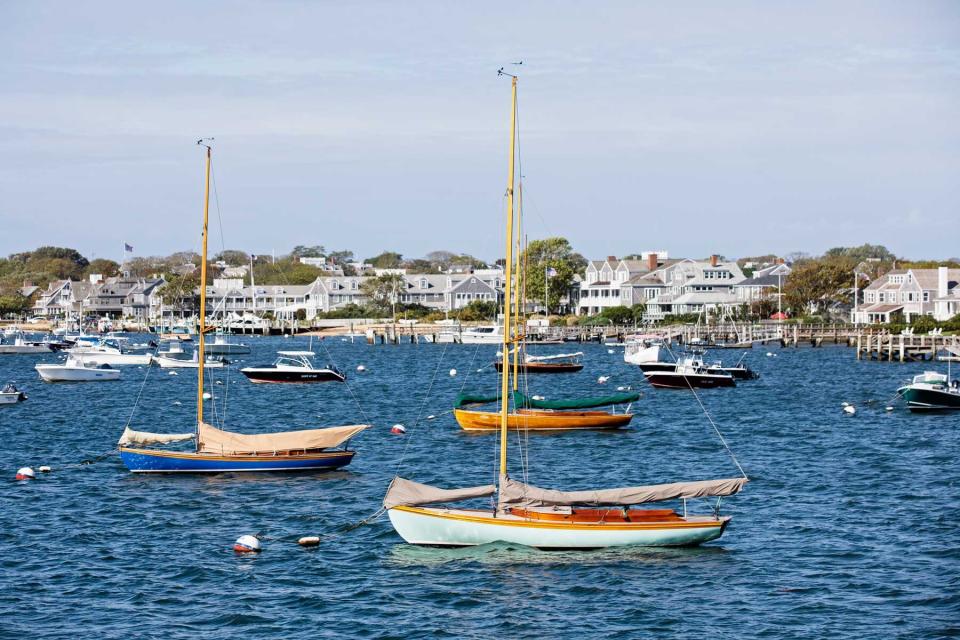
Elizabeth Cecil Sailboats at anchor in Nantucket Harbor.
Our hotel, the Life House, Nantucket — a sister property to the Faraway — felt very much a part of this world. Occupying a two-story house just outside the center of town, it had both the intimacy of an Airbnb and the service and amenities of a boutique hotel. A young, casually dressed staffer ushered us into an elegant living room with carefully restored period details (wooden floorboards, cabinets, and side tables), all burnished with a contemporary, Soho House-style sheen (chill-out soundtrack and herbal scents in the air). It felt more like arriving at a friend's house than at a hotel.
Sister Ship's bar is a self-styled "cocktail club" decorated with Chinese lamps, Polynesian barstools, Italian marble countertops, and Moroccan arches. The décor is meant to evoke a sea-captain's journey across the world.
My family and I spent the first couple of days exploring Nantucket on the chic white bicycles Life House offers free to its guests, navigating between lunches in white-linen-tablecloth restaurants (there is a certain formality to much of the island's dining culture) and languid afternoons on sandy beaches. In the evenings, we returned to Life House and sat around a fire pit in the courtyard while immaculately dressed staffers brought us marshmallows and chocolate to make into s'mores over the fire. We marveled at the stars. It was just like camping — except not at all.
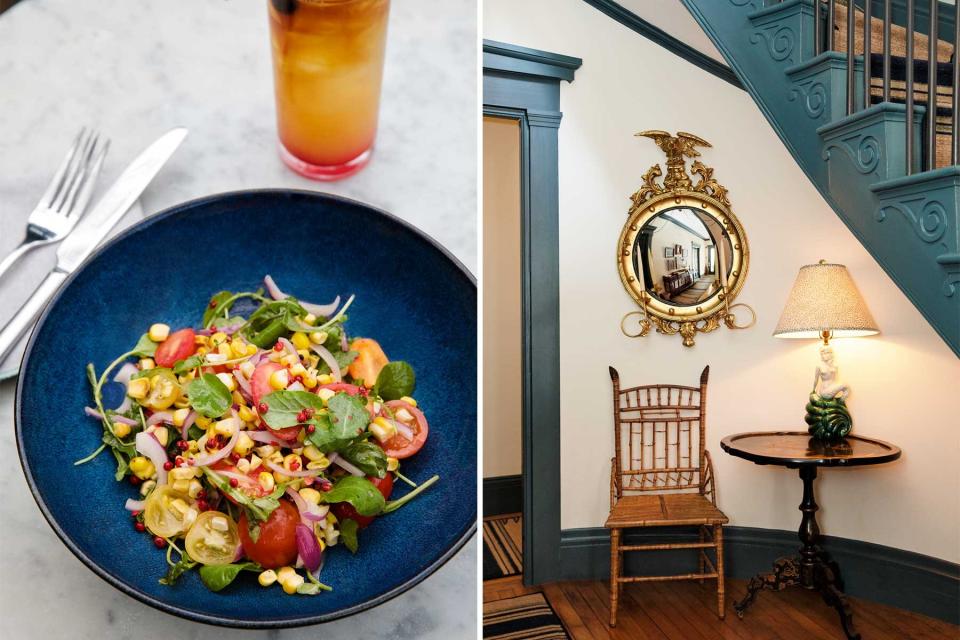
Elizabeth Cecil From left: A summer salad and a Train Wreck cocktail at the Club Car, a restaurant set in a retired train carriage; a hallway at Faraway Nantucket, where vintage furnishings create a personal feel.
One afternoon I went back to Sister Ship to meet Liz McDermott Barnes, an interior designer who had vacationed on Nantucket for around two decades before moving there part-time seven years ago. As she sipped an iced tea, McDermott Barnes described the evolution she'd witnessed on Nantucket — the new money, the rising house prices, the chartered flights that deliver a crowd dressed in black, even on the hottest summer days.
"Nantucket has changed," McDermott Barnes said, and I thought she sounded a little wistful. But at the same time she seemed to revel in the fresh sense of style, in the modernization that was propelling it into the contemporary world. "We have to keep this place relevant," she said. "We have to move with the times."
Related: The 10 Best Resorts in New England
McDermott Barnes offered to give me a tour of the town; she said she wanted to show me how tastes have shifted on the island. We started right at Sister Ship, where the bar is a self-styled "cocktail club" decorated with Chinese lamps, Polynesian barstools, Italian marble countertops, and Moroccan arches. She explained that these surprising juxtapositions actually formed a coherent narrative: the décor was meant to evoke a sea-captain's journey across the world.
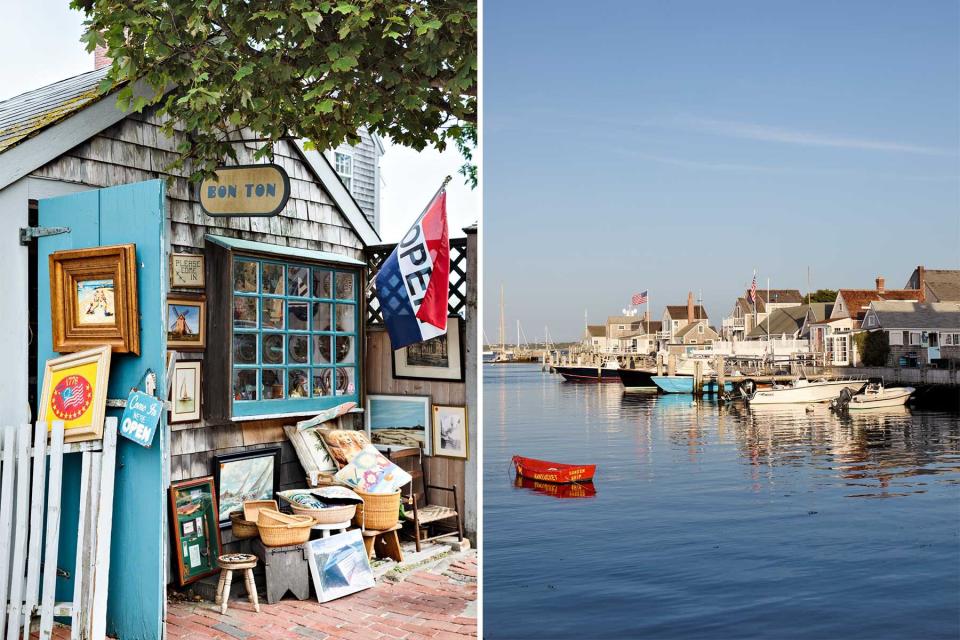
Elizabeth Cecil From left: Bon Ton, a store selling New England–style homewares; Old North Wharf, in Nantucket Harbor.
We left the hotel and walked along Centre Street, passing restaurants, boutiques, and an occasional real estate office. As we walked, McDermott Barnes told me that her clients used to request "historically relevant" interiors; now they increasingly opt for what she calls "transitional design," an effort to fuse the traditional with a more modern outlook.
More Trip Ideas: Provincetown, a Longtime Haven for LGBTQ Travelers, Is the Perfect Beach Town
As an example, she pointed to 21 Broad, a hotel whose exterior was virtually indistinguishable from all the other buildings in town: gray clapboards, white trim, a shingled roof. This look is the result of planning codes that stringently protect the appearance of old Nantucket. But inside, the 27-room hotel had an altogether different landscape of sky blues and bright yellows and whimsical, Art Deco–inspired furniture — a New England vision of Miami Beach.
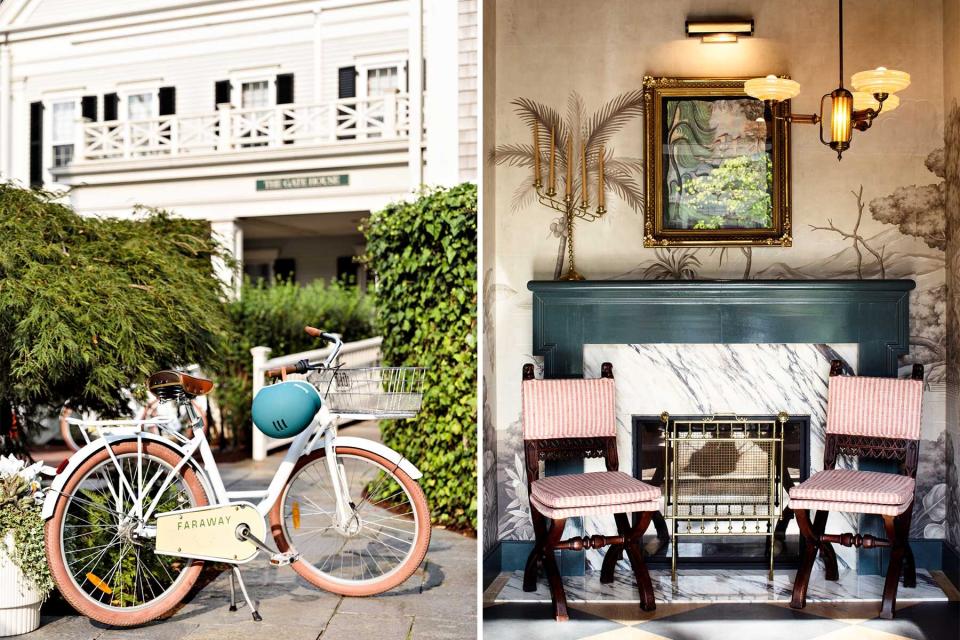
Elizabeth Cecil From left: A guest bicycle outside the Faraway Nantucket hotel; the Faraway hotel's entrance.
We walked past the Whaling Museum, a former candle factory converted into a modern exhibition space for historical artifacts, and then along South Water Street, which is lined with pizzerias, ice cream shops, and bars. McDermott Barnes led me to Sylvia Antiques, an establishment that has been owned by John Sylvia's family for three generations.
There was a real energy in the town, and there was also a surprising sense of openness and accessibility. While entry was, in the latter half of the last century, largely restricted to certain classes and races, Nantucket was now teeming with a diverse population.
Sylvia showed me around his store, pointing out 18th- and 19th-century artwork and shipping artifacts, and telling stories about their provenance and the roles they played in local traditions. The store has a large collection of "lightship baskets," which got their name because they were said to have been woven by sailors aboard ships that served as floating lighthouses. Sailors' valentines, elaborate mosaics of shells, were brought back from Barbados by returning seamen as gifts for their wives. Once these items had been considered mere trinkets; on the new Nantucket they were transformed into treasures, often selling for thousands of dollars.
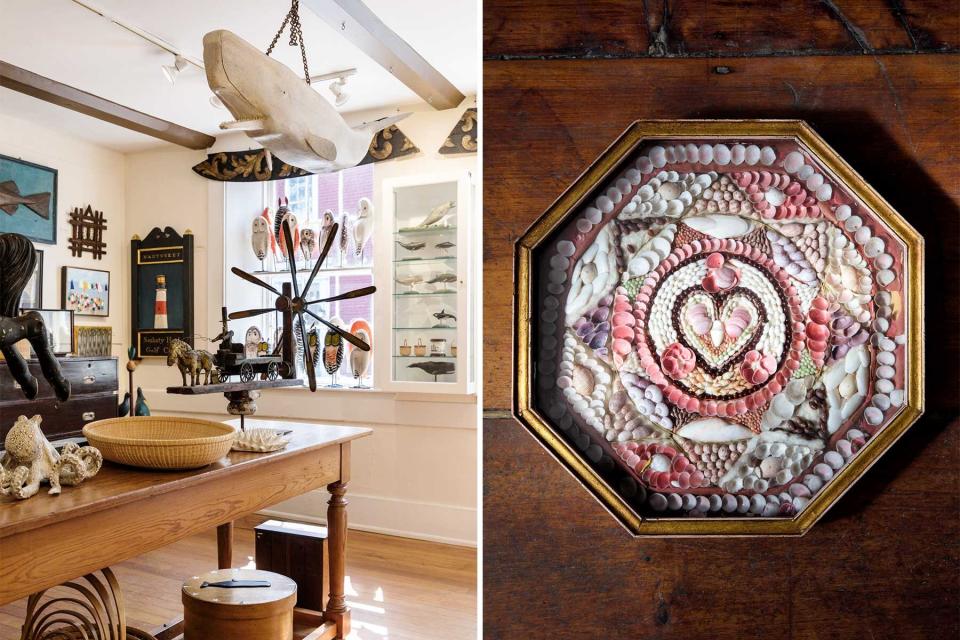
Elizabeth Cecil From left: Maritime treasures at Sylvia Antiques; a traditional sailors’ valentine at Sylvia Antiques.
As we said our goodbyes to Sylvia and walked back out onto the street, I found myself — somewhat unexpectedly — admiring Nantucket's latest incarnation. There was a real energy in the town, and there was also a surprising sense of openness and accessibility. While entry was, in the latter half of the last century, largely restricted to certain classes and races, Nantucket was now teeming with a diverse population. We took an Uber ride one evening and befriended our young Nepali driver, Praveen Neupane. He told us he belonged to a community of some 50 Nepali families that lived year-round on the island, and said they were collecting signatures for a petition to build a Hindu temple.
I nonetheless found myself, after a few days, wondering what lay beyond the cosmopolitan town and craving the "innocence of the land" Melville had described. My wife and sons were in agreement: we had come on a family holiday, searching for nature, space, and fresh air; now we wondered if it was still possible to find them.

Elizabeth Cecil Cosmos growing wild on the ’Sconset Bluff Walk.
Which is how I wound up one morning, on our last day on the island, in a car with Holly Ruth Finigan, a local real estate agent. Finigan, originally from New Hampshire, had been spending her summers on the island since 2005; just over a decade ago, she moved there full-time. Earlier, when I called her and said I'd been staying in town and was curious to see a more peaceful side of the place, she offered to drive me around. "The summer season can feel overwhelming," she said. "There's a big difference between the Nantucket population in January and July."
As we drove out of town, she, like McDermott Barnes, spoke of how her adopted home had been transformed. "Social media blew up Nantucket," she said. "It's the most beautiful, Instagrammable island." She acknowledged that the sense of remoteness she encountered when she first visited was more and more elusive, but she insisted it wasn't quite gone. "Nantucket is a choose-your-own adventure," she told me as we passed an open prairie, referred to by locals as the Serengeti. Beyond it, occasional glimpses of the shimmering ocean burst into view.
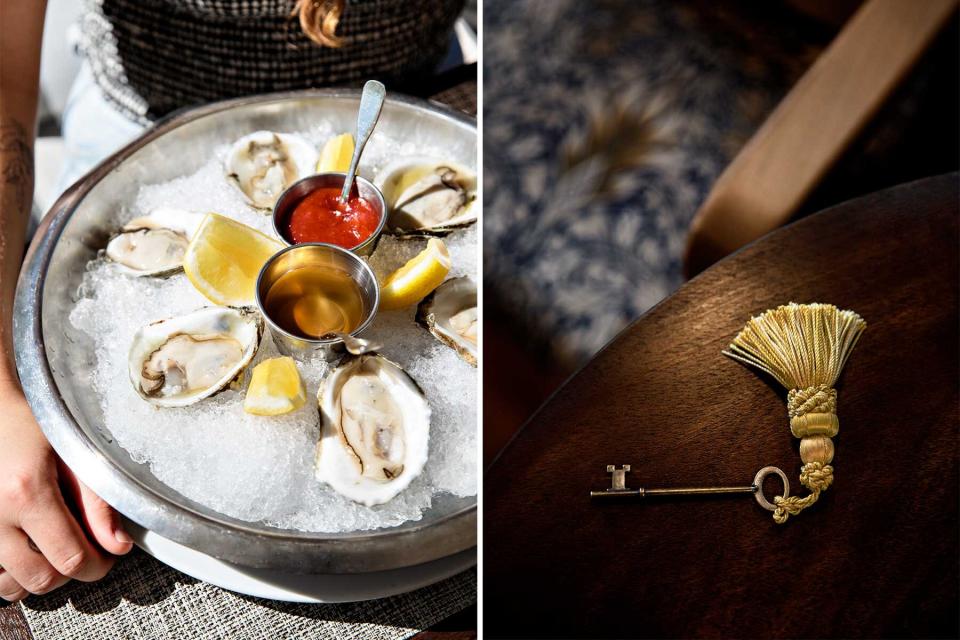
Elizabeth Cecil From left: Oysters at Topper’s Restaurant, in the Wauwinet hotel; a tasseled key at the Life House hotel.
We were headed, I soon learned, to Siasconset (commonly referred to as 'Sconset). Located on the eastern side of the island, with a year-round population of less than 100, this former fishing village is a warren of grassy paths that pass between photogenic cottages and gardens bursting with roses and dahlias. The heart of the village consists of a post office, a single provisions store, and, nearby, the Siasconset Casino, a club with manicured red clay tennis courts. Finigan described 'Sconset as "a step back in time." It reminded me of the Cotswolds, in England.
We followed the two-mile 'Sconset Bluff Walk, a dirt track that led us some 50 feet above the Atlantic Ocean, where we took in a vista of endless peeling waves. The houses lining this bluff, some dating way back to the 17th century, were like antiques beaten by the coastal wind, a curious mix of ramshackle and luxurious.
The name of the village came from the Wampanoag language, Finigan told me; it translates roughly as "a place of great bones." Back in the late 1700s and early 1800s, the village would fill each summer with ship captains and their families, who came to escape the fumes emitted by the whale-processing plants in the main town.
Standing on that bluff, I imagined those centuries-old homes as skeletons, physical relics of this region's history. "There are all these old souls in this place," Finigan said, and she gestured along the shoreline, at a landscape that had passed through time virtually unscathed. "You can still find slices of paradise on Nantucket," she said — and I had to agree.
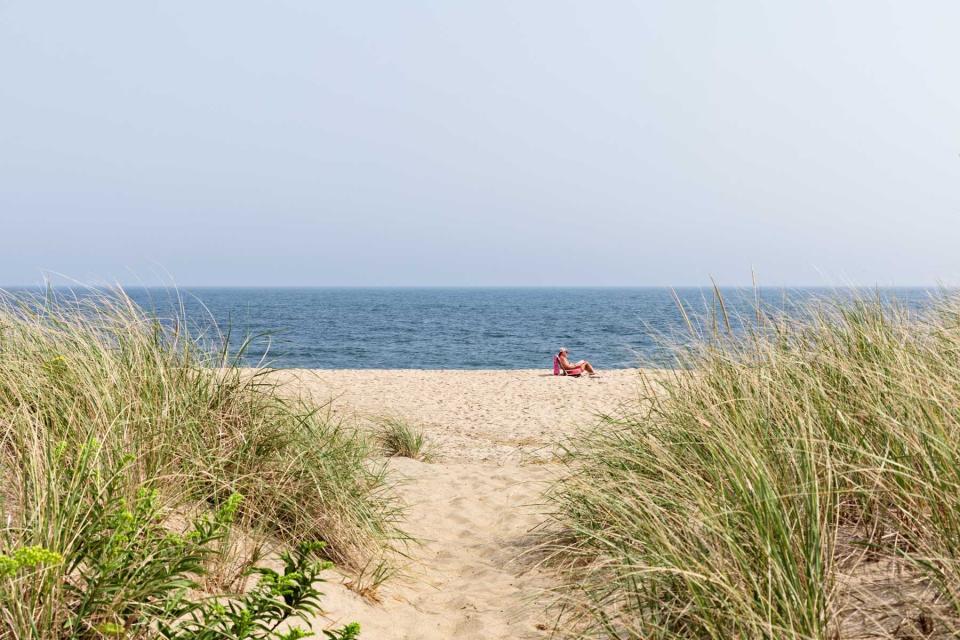
Elizabeth Cecil A sunbather on the beach at ’Sconset, a former fishing village on Nantucket’s eastern shore.
In the Know on Nantucket
Where to Stay
Faraway Nantucket: Inspired by the adventures of an imaginary female ship's captain, the design at this 62-key property is eclectic and playful.
Life House, Nantucket: This boutique hotel set in a 19th-century Federal-style mansion launched in 2020. The look is bright and airy, with rattan writing desks, floral tiles, and splashes of color throughout.
The Wauwinet: A Relais & Châteaux property that's ideal for those seeking privacy — and oceanfront access.
21 Broad: Blending in with other clapboard homes in the neighborhood, this 27-room property is a stylish, laid-back choice in the heart of downtown.
Where to Eat
The Chanticleer: In the quiet village of 'Sconset, this longtime island favorite serves classic French dishes, such as halibut à la provençale.
The Club Car: Set in an antique train carriage, this seafood spot is also known for its nightly live piano sets.
Sister Ship: Come for the Mediterranean seafood, stay for drinks in the courtyard, where the party often extends late into the night.
Topper's: Overlooking Nantucket Bay, this upscale restaurant at the Wauwinet has an extensive wine list and a hushed, high-end atmosphere.
What to Do
'Sconset Beach: Spend a day on one of the island's quieter stretches of sand (and watch for seals surfacing above the waves). 7 Gully Road.
Sylvia Antiques: Browse a rich stock of classic New England artifacts, including folk art and traditional baskets.
Whaling Museum: Just two blocks from the ferry, the museum offers an in-depth introduction to Nantucket's history as the capital of America's whaling industry.
A version of this story first appeared in the August 2022 issue of Travel + Leisure under the headline "Summerland."

